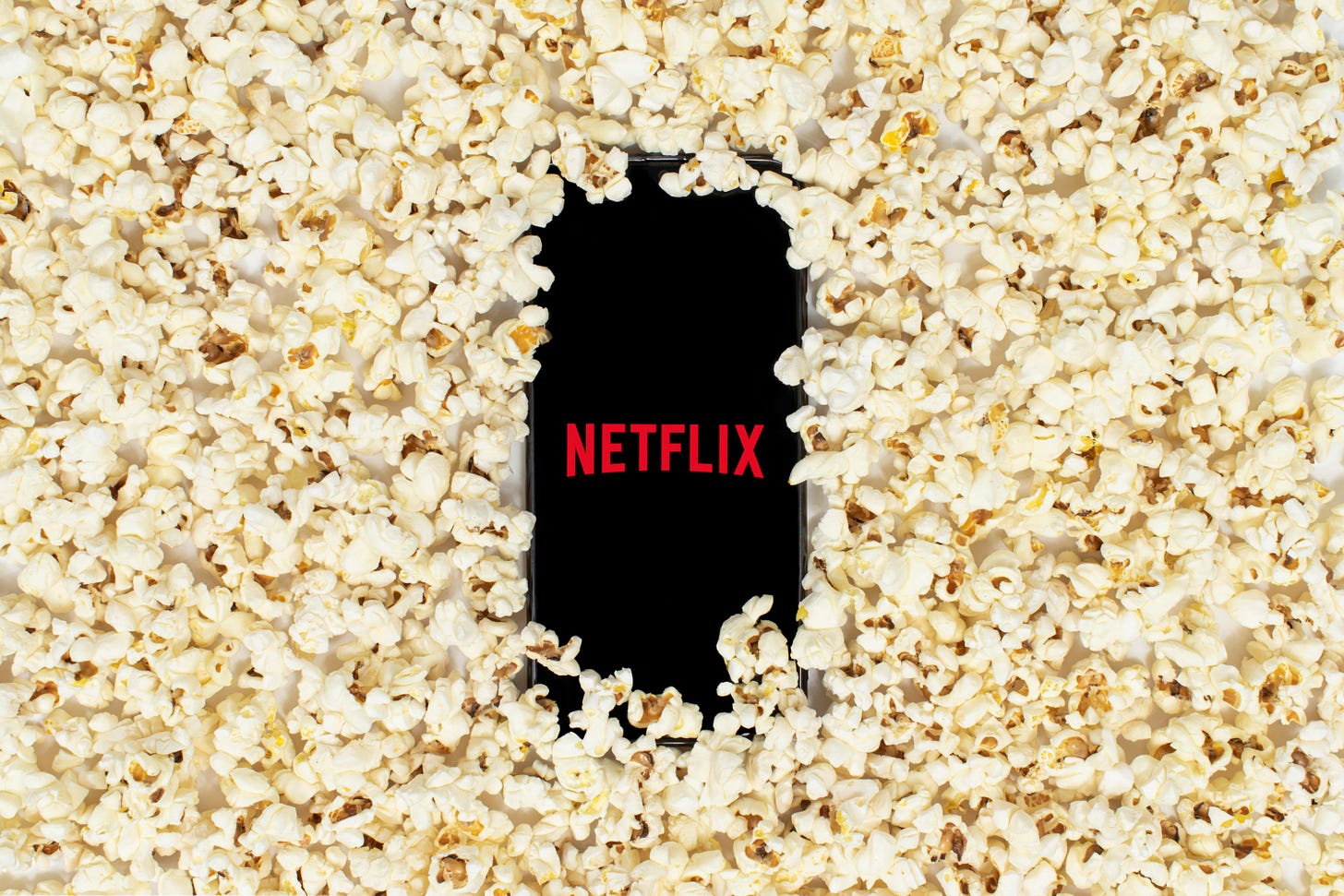The New Network
Netflix might be making crap, but at least it’s making lots of it and letting you watch at 2x speed.
On the last edition of the Sub-Beacon (subscribe! Leave a review!), I wondered if Netflix is, more or less, the modern-day equivalent of a 1980s or 1970s broadcast network: something to watch if not necessarily something great to watch. I believe it was JVL who suggested the equivalent was Simon & Simon. If you’re under the age of 30 or so, you’ve probably never heard of Simon & Simon, a program that ran for eight (8!) seasons on CBS and starred Major Dad himself, Gerald McRaney. (And if you don’t remember Major Dad, please keep that to yourself; I feel old enough as it is.)
But then, there’s a decent chance you’ve never heard of Gypsy or Godless or Seven Seconds, or recognize them only as tiles flickering past you on Netflix’s homepage while you scroll through an endless sea of mediocrity trying to find something interesting to watch before sighing and settling on The Office or Friends or 30 Rock. The original movies you might have more familiarity with, titles like The Old Guard or Extraction, to say nothing of the buzzier Bird Box . . . but then, there are a lot of nonentities in that category as well, movies with insanely generic titles like—and I swear to God these are all real—Amateur and Dude and Candy Jar and Sometimes and Cargo and Extinction.
With a handful of obvious exceptions, must of which fall into the “Blank Checks for Awards-Caliber Directors” category—the Coens’ Ballad of Buster Scruggs; Cuaron’s Roma; Lee’s Da 5 Bloods; Scorsese’s The Irishman—Netflix originals have been, well, pretty “meh.” But don’t take my word for it! This is the age of The Great Okay, as M.G. Siegler put it:
Meh, Eh, Bleh, Junk, Crap, Fine, Good, So-So, Garbage, Decent.
The above list and reviews aren’t random. They’re the top ten best performingNetflix original movies of all time—and the general critical consensus about them. Yes, the reviews are subjective. But in aggregate, perhaps a bit less so. And my own views for the ones I’ve seen, line up pretty perfectly. It sure feels like a lot of the most popular Netflix movies (if not “shows” as well, which are harder to “rate”) are decidedly mediocre. The Old Guard is the movie above that rates “fine” and that’s being slightly generous. Despite some, frankly, bizarre hype as something special, a magical reinvention of the comic book movie or the superhero genre, The Old Guard was almost the definition of fine. Flat action scenes that were competently shot without overwhelming anyone with “style” or “flair”; a storyline that was altogether too dour for its ridiculous premise; a handful of solid actors given nothing to act against, given the utterly banal nature of the villain they were facing.
In short: It’s the sort of movie you watch while folding your socks and need something on in the background. And if you decide to watch it at 2x speed, well, all the better.
There’s long been a place for that kind of movie, that type of show! Which brings me back to the broadcast networks. TV was once referred to as a vast wasteland because it was, well, a shallow sea of mediocrity. Classics could, undoubtedly, wander out of that primordial ooze—the occasional MASH; the sublime early Simpsons—but most network TV came and went and no one really missed it. It was, in a very real way, designed to be disposable. In the era before mass adoption of the VCR (to say nothing of DVRs), those programs all consisted of episodes that had to stand alone. You had to be able to miss something and for that miss not to really matter.
And if it doesn’t really matter if something is missed . . . does it matter if it’s watched?
Anyway, Netflix strikes me as, more or less, the modern equivalent of broadcast networks, a reinvention of TV’s place in the cultural landscape as “The Great Okay.” A shockingly high number of people have access to Netflix: almost 73 million in the United States alone, and those subscribers often share accounts with multiple people. And while Netflix undoubtedly does some micro-targeting, hitting different groups of viewers with different kinds of properties, at the end of the day the thing they seem most interested in impressing us with is the number of people who watch various of their big entities (for at least two minutes).
They’re making mass-market mediocrities and delivering it in a slightly new way. But Netflix isn’t reinventing the wheel. They’re just repackaging broadcast TV.



